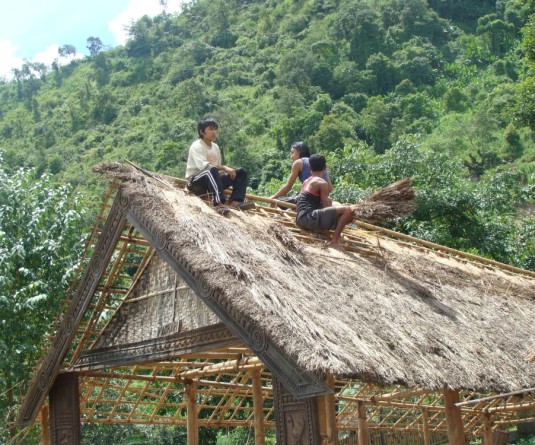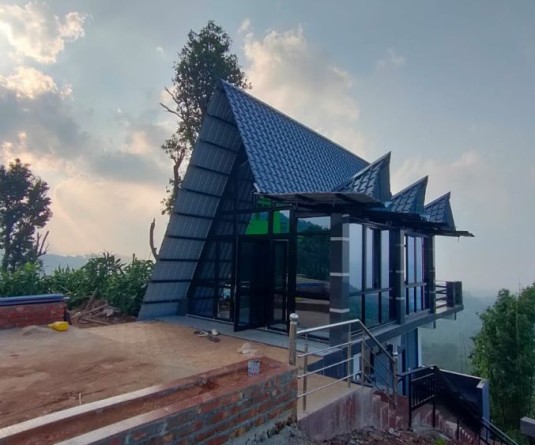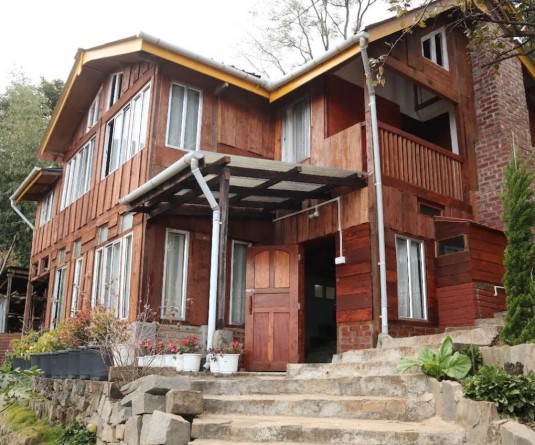The way to mount Puliebadze. (Morung Photo)
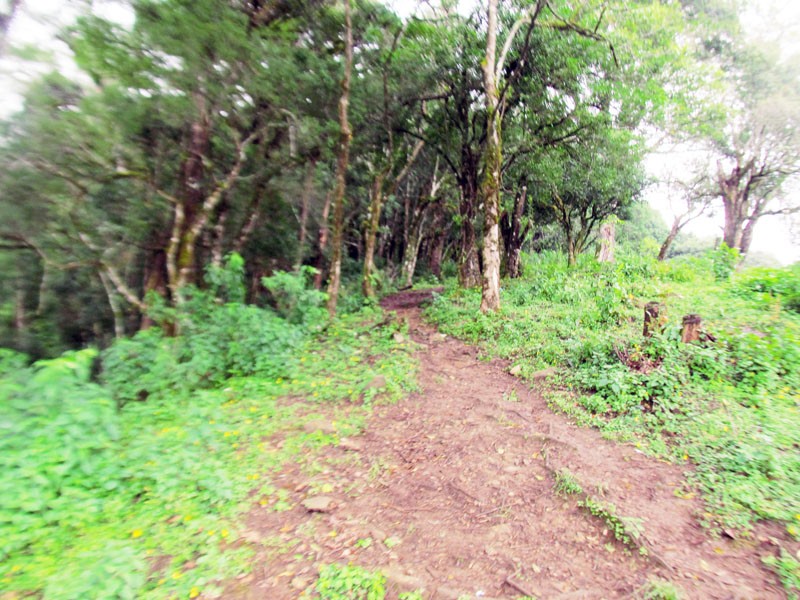
Yupangnenla Longkumer
The Morung Express Feature
Dimapur | November 28
High, majestic and lush Mount Puliebadze has been silently watching Kohima town like an ancient sentinel of lore for perhaps millions of years. Shrouded in legends of time and mystique, Mount Puliebadze is today a paradigm unto itself – it is a landmark of eco-tourism, recreation, curiosity and a prized sanctuary for exotic flora and fauna unique to Nagaland.
Back to nature
When entering the reserve, one will notice a long stretch of stone wall resembling an ancient Roman wall. The wall is also known as ‘mithun wall’, which was built to stop the mithuns (a semi domesticated free-range bovine of the Bros frontalis wild cattle species) from straying. However, it is mysterious that no one remembers the time the ‘mithun wall’ was built. The villagers say that the mithuns do not cross the enclosure and time to time the villagers do repair the wall.
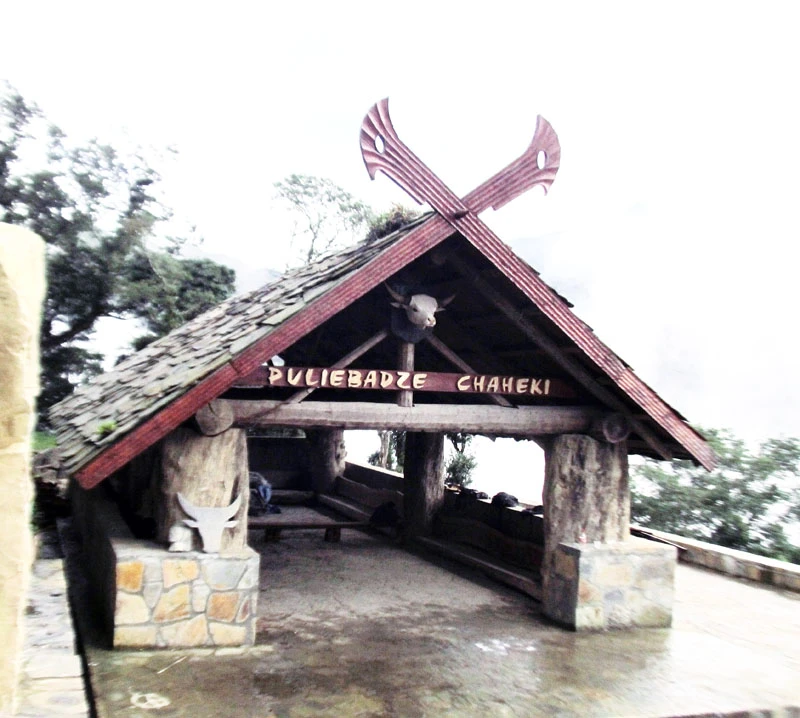
Also, the reserve has rivulets flowing through which comprise the main water sources of the village. The way to the principal rivulet seems like one were entering a completely different world – the sound of the cicada, tall gigantic trees and the earthy smell of decaying wood and plants. But one should keep watch for the reason that on every leaf and twig the tiny bloodsucking crawlers, leeches, eagerly await to climb onto their potential victims for a feast.
Although they are harmless and unlike how urban legends have branded them, for someone seeing the creepy bloodsuckers in clusters would cause panic and lead their imaginations into running wild. In some parts, the forest is so thick that even sunlight barely reaches the ground that it becomes a blissful place for the leeches to breed. For this, most people prefer to climb Puliebadze during winter seasons.
However, in the recent times the road to Mount Puliebadze has been extended till Puliebadze Chahe Ki, a rest house. This proved a disappointment for ‘nature lovers.’ The road extension has made the sanctuary too accessible, which in return would possibly harm the ecosystem and the ambience of the reserve.
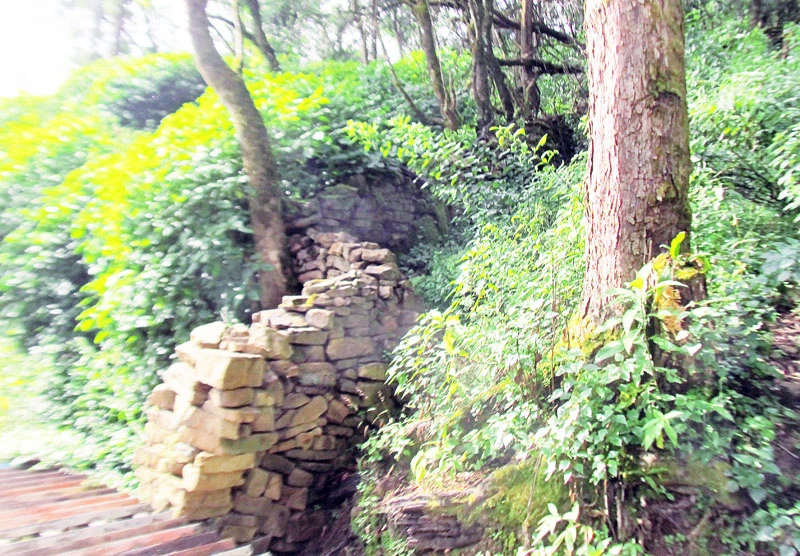
The guardians
The Jotsoma village council has been doing its best in conserving the forest, even to the extent of leaving dead trees to rot rather than being used as firewood. The council has laid down restrictions such as prohibition on plucking plants, littering and hunting except during stipulated hunting seasons.
Exploring more the council’s conservation methods, The Morung Express interacted with Jotsoma Village Council’s Chairman Golepra Peseyie, who disclosed that Jotsoma youths play an important role by maintaining vigilance – they check every trekker and makes sure that nothing is taken from the reserve. If caught, defaulters are penalized with a minimum of Rs 1000 to Rs 3000 as fine. In the case of illegal hunting the fine may escalate and even go to the extent of confiscation of the defaulter’s hunting tools including the rifle. Also, he said littering is something which is difficult to check, and that it would be ‘good’ if people are more responsible. Also, every trekker has to pay a nominal fee of Rs 10 before entering the sanctuary.
In regard to eco-tourism, the council chairman said the industry can boost the village’s economy by generating employment and subsidiaries such as tourist guides, tourist transport, and perhaps a tourist lodge. The council will make sure that only Jotsoma villagers are involved in the project and not outsiders, he added.
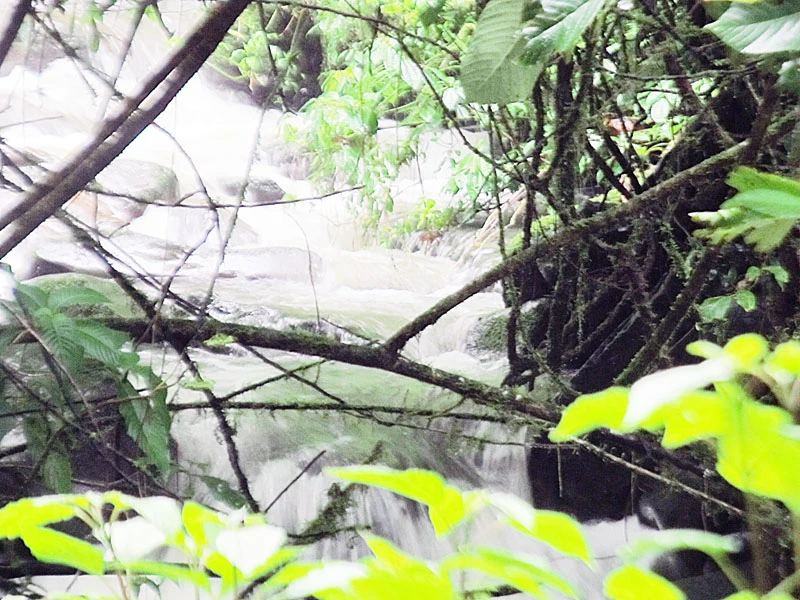
A citizen of Jotsoma said that, tourist and visitors should be prohibited from leaving behind any non-biodegradable things in the vicinity of the reserve if the village is serious about eco-tourism. He also went on saying that it would be wise if the village youth maintains a register where they can enter the number of non-biodegradable things a visitor is carrying in his bag so that they can check if anything is left behind in the reserve, later.
Queried on how Jotsoma council maintains a hunting season every year, the village council chairman said that the hunting season is once-a-year for around 15 days but the council is trying to minimize it to one week. The village was following the British hunting season system earlier i.e. three months. However, the council felt that the stated system was way too long. “…three months is too long; hunters might clean up the forest,” he added.
Peseyie said Puliebadze is a home to many wild animals and birds. When he was just a boy, the chairman said, he had seen a species of the gibbon in the forest but now they are nowhere to be found, probably extinct. Likewise, the hornbill is hardly seen these days, he rued. The others wildlife inhabiting the forest are the Tragopan, the wild cat, the Asian black bear, the wild boar, the porcupine, the squirrel, the deer and even the mongoose among others. He also mentioned about a beast called the ‘Soki’ (in Tenyidie), which apparently looks like a dog but much bigger and attacks mithuns and a frog known as ‘Guokru’ (in Tenyidie), which is a delicacy among the Jotsoma people.
Besides fauna, Puliebadze has rich flora too with orchids, Rhododendrons and also the medicinal plant ginseng, he added.


